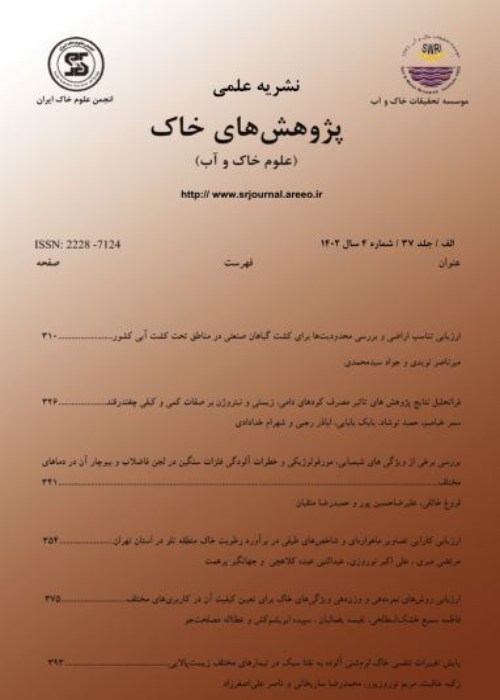Effect of Oxalic Acid and Vermicompost on Colloidal Transport of Lead in Two Types of Soil Texture
The present study aimed at investigating the transport of lead by colloids in two types of soils with sandy loam and clay loam textures under vermicompost and organic acid treatments. The experiment was conducted in a complete randomized design. Treatments consisted of three factors including soil texture at two levels (sandy loam and clay loam), additive at five levels (50 and 1000 μM levels of oxalic acid, 1% and 2% weight basis for vermicompost, and a zero level as a control), and the amount of leaching water at 10 levels (10 pore volume). PVC soil columns with an inner diameter of 15 cm and a height of 25 cm were prepared and the treatments were applied, then, leaching was performed based on soil suction measurements at different pore volumes. The results indicated that, after the application of vermicompost to the clay loam soil, leaching colloid from the soil increased and the discharged lead decreased. Adding organic acid increased leaching colloid from the soil; however, treating 50 µM organic acids significantly decreased discharged colloid compared to the control and 1000 µM organic acids treatment. The lowest rates of lead discharge were in the control treatment and the more the concentration of the acid, the more was the discharged lead. However, regarding lead discharge, there was no significant difference among the three levels. In the sandy loam soil, the greatest level of colloid transport belonged to the control, and adding vermicompost significantly prevented colloid transport from the soil, which was compatible with the process of lead discharge. Moreover, adding organic acid decreased colloid transport and the greatest rates of the transportation was recorded in the control treatment that was also compatible with the process of lead discharge. Furthermore, the relation between lead and the discharged colloid was only significant in the sandy loam soil. The results of this study showed that the movement of soluble lead in fine textured soils was negligible and insignificant; however, a substantial amount of lead discharge was detected through colloidal adsorption transport in soil columns. Therefore, it may be concluded that such mechanism would result in lead contamination of groundwater in these types of soils.
- حق عضویت دریافتی صرف حمایت از نشریات عضو و نگهداری، تکمیل و توسعه مگیران میشود.
- پرداخت حق اشتراک و دانلود مقالات اجازه بازنشر آن در سایر رسانههای چاپی و دیجیتال را به کاربر نمیدهد.



